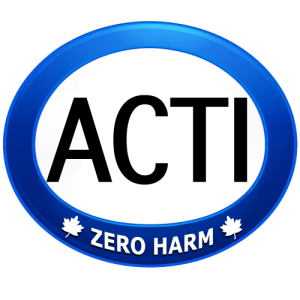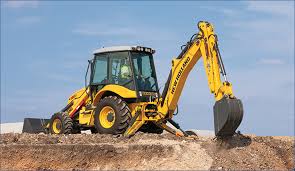
🔍 Click to Expand: Loader Backhoe Training Overview
The **ACTI Loader Backhoe Training Program** provides participants with the **knowledge and skills necessary to safely operate a Loader Backhoe in various industrial and construction settings**. This program aligns with **National and Provincial OH&S regulations, CSA standards, and industry best practices**, ensuring compliance and operator competency.
Participants will learn about **pre-use inspections, safe operating techniques, hazard awareness, and regulatory requirements** to minimize risks and enhance workplace safety.
📌 Key Learning Modules:
- Regulatory Standards & Compliance: Understanding OH&S legislation, CSA standards, and employer responsibilities.
- Loader Backhoe Anatomy & Components: Identifying key parts, including hydraulic systems, controls, and safety features.
- Pre-Use Inspection & Maintenance: Conducting daily equipment checks to ensure operational safety.
- Safe Operating Techniques: Learning **stability principles, load management, maneuvering, and hazard avoidance**.
- Worksite Safety & Risk Mitigation: Recognizing common hazards such as **overturning, underground utilities, and pedestrian safety**.
- Emergency Procedures & Best Practices: Responding to **equipment failures, adverse weather conditions, and emergency stops**.
✅ Upon Completion:
Upon successfully completing the **ACTI Loader Backhoe Training Program**, participants will be able to:
- ✅ **Understand and apply** OH&S regulations and CSA standards related to Loader Backhoe operations.
- ✅ **Perform pre-use inspections** to ensure the equipment is in **safe operating condition**.
- ✅ **Operate a Loader Backhoe safely**, including **digging, lifting, and maneuvering in confined spaces**.
- ✅ **Identify and mitigate worksite hazards**, such as **uneven terrain, buried utilities, and bystander safety**.
- ✅ **Implement proper load handling techniques** to prevent **tip-overs and structural damage**.
- ✅ **Follow emergency response protocols** in the event of **equipment failure or environmental hazards**.
- ✅ **Pass a written knowledge assessment** (minimum 80%) and successfully complete the practical skills evaluation.
Participants who meet all course requirements will receive an **ACTI Loader Backhoe Operator Certification**, recognized across **Canada**, ensuring they are qualified to safely operate **Loader Backhoes in construction, mining, and industrial worksites**.
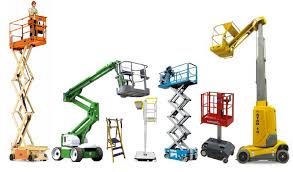
🔍 Click to Expand: MEWP Training Overview
The **ACTI Mobile Elevated Work Platform (MEWP) Training Program** is designed to provide participants with the **knowledge and skills required to safely operate MEWPs in various work environments**. This training aligns with ** OH&S regulations, CSA B354 standards, and industry best practices**, ensuring compliance and operational safety.
Participants will learn how to **identify hazards, conduct equipment inspections, operate MEWPs safely, and execute emergency procedures**. The course covers **MEWP classifications, stability principles, fall protection, safe work practices, and emergency response**.
📌 Key Learning Modules:
- Regulatory Standards & Compliance: Understanding OH&S requirements, CSA B354 standards, and employer/worker responsibilities.
- MEWP Types & Components: Identifying different types of MEWPs, their components, and required inspections.
- Pre-Use Inspections & Maintenance: Conducting daily inspections and understanding maintenance requirements.
- Safe Operation & Stability: Proper machine operation, load capacity, working on slopes, and avoiding tip-overs.
- Fall Protection & Worksite Safety: Implementing fall protection measures, hazard assessments, and exclusion zones.
- Emergency Preparedness & Rescue Plans: Understanding rescue procedures in case of machine failure or operator distress.
✅ Upon Completion:
Upon successfully completing the **ACTI MEWP Training Program**, participants will be able to:
- ✅ **Understand and apply** OH&S regulations, CSA B354 standards, and site-specific MEWP requirements.
- ✅ **Conduct pre-use inspections** and recognize defects that require maintenance or repair.
- ✅ **Safely operate MEWPs** while maintaining stability, avoiding hazards, and following proper work procedures.
- ✅ **Implement fall protection measures** and recognize the importance of safe work practices at height.
- ✅ **Develop and follow emergency action plans** for rescue operations and incident response.
- ✅ **Pass a written knowledge assessment** (minimum 80%) and successfully complete the practical evaluation.
Participants who meet all course requirements will receive an **ACTI MEWP Operator Certification**, recognized across **Canada**, ensuring they are qualified to operate MEWPs safely in **construction, industrial, and maintenance environments**.
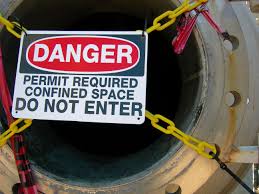
🔍 Click to Expand: Confined Space Entry & Attendant Training Overview
The **ACTI Confined Space Entry & Attendant Training Program** is designed to provide workers with the **knowledge and skills necessary to safely enter, monitor, and work in confined spaces**. This training aligns with ** OH&S regulations, CSA Z1006 standards, and industry best practices**, ensuring compliance and workplace safety.
Participants will learn how to **identify confined space hazards, implement control measures, follow safe entry procedures, and perform rescue operations**. The course covers **hazard assessment, atmospheric testing, isolation procedures, personal protective equipment (PPE), and emergency response**.
📌 Key Learning Modules:
- Legislation & Regulatory Requirements: Understanding OH&S, CSA Z1006, and employer/worker obligations.
- Hazard Identification & Control Measures: Recognizing common confined space hazards, including atmospheric, mechanical, and engulfment risks.
- Entry Procedures & Permits: Safe work permits, isolation, atmospheric monitoring, and attendant responsibilities.
- Personal Protective Equipment (PPE): Proper selection, use, and inspection of harnesses, respiratory protection, and gas detection equipment.
- Rescue Planning & Emergency Procedures: Understanding confined space rescue types, non-entry rescues, and emergency response planning.
✅ Upon Completion:
Upon successfully completing the **ACTI Confined Space Entry & Attendant Training Program**, participants will be able to:
- ✅ **Understand and apply** OH&S regulations, CSA Z1006, and site-specific confined space entry requirements.
- ✅ **Conduct hazard assessments** and implement control measures to reduce risks.
- ✅ **Perform pre-entry atmospheric testing** and maintain safe conditions throughout the work process.
- ✅ **Properly use PPE and gas detection equipment** to ensure personal safety and compliance.
- ✅ **Carry out the duties of an attendant and entry supervisor** to oversee confined space operations.
- ✅ **Develop and execute emergency action plans** for confined space rescue situations.
- ✅ **Pass a written knowledge assessment** (minimum 80%) and successfully complete the practical evaluation.
Participants who meet all course requirements will receive an **ACTI Confined Space Entry & Attendant Certification**, recognized across **Canada**, ensuring they are qualified to safely enter, monitor, and work in confined spaces within **industrial, construction, and maintenance environments**.

🔍 Click to Expand: Fall Protection Training Overview
The **ACTI Fall Protection Training Program** is designed to equip workers with the **knowledge and skills required to work safely at heights**, ensuring compliance with ** OH&S regulations, CSA Z259 standards, and industry best practices**.
Participants will learn how to **identify fall hazards, select appropriate fall protection systems, use equipment correctly, and develop rescue plans**. The course covers **regulatory requirements, fall arrest systems, anchor points, inspection procedures, and emergency response**.
📌 Key Learning Modules:
- Legislation & Worker Responsibilities: Understanding OH&S regulations, CSA Z259 standards, and employer/worker obligations.
- Hazard Recognition & Risk Assessment: Identifying common fall hazards and assessing worksite risks.
- Hierarchy of Controls: Exploring fall prevention, fall arrest, and fall restraint systems.
- Fall Protection Equipment: Proper selection, inspection, and use of harnesses, lanyards, anchor points, and self-retracting lifelines.
- Work Access & Platforms: Safe use of ladders, scaffolds, swing stages, and MEWPs.
- Emergency Response & Rescue Planning: Developing effective fall rescue plans and understanding suspension trauma risks.
✅ Upon Completion:
Upon successfully completing the **ACTI Fall Protection Training Program**, participants will be able to:
- ✅ **Understand and apply** OH&S regulations, CSA Z259 standards, and worksite-specific fall protection requirements.
- ✅ **Recognize fall hazards** and implement control measures to reduce risks.
- ✅ **Properly inspect and use** fall protection equipment, including harnesses, lanyards, lifelines, and anchor points.
- ✅ **Safely work on elevated platforms, ladders, and scaffolds** while maintaining compliance with fall protection regulations.
- ✅ **Develop and execute emergency response plans** for fall-related incidents, including worker rescue.
- ✅ **Pass a written knowledge assessment** (minimum 80%) and successfully complete the practical evaluation.
Participants who meet all course requirements will receive an **ACTI Fall Protection Certification**, recognized across **Canada**, ensuring they are qualified to work safely at heights in **construction, industrial, and maintenance environments**.
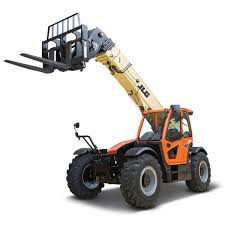
🔍 Click to Expand: Lift Truck Training Overview
The **ACTI Lift Truck Training Program** is designed to provide participants with the **knowledge and skills necessary to safely operate counterbalance and telescopic forklifts in various work environments**. This training aligns with **Alberta OH&S regulations, CSA B335 standards, and industry best practices**, ensuring compliance and workplace safety.
Participants will learn how to **conduct equipment inspections, operate lift trucks safely, handle loads correctly, and recognize hazards associated with lift truck operations**. The course covers **forklift classifications, stability principles, safe operating procedures, hazard awareness, and emergency response**.
📌 Key Learning Modules:
- Regulatory Standards & Compliance: Understanding OH&S requirements, CSA B335 standards, and employer/worker responsibilities.
- Lift Truck Anatomy & Components: Identifying key components, performing pre-use inspections, and understanding load capacity.
- Stability, Load Handling & Weight Estimation: Learning about center of gravity, balance principles, and proper load handling.
- Safe Operation & Driving Techniques: Maneuvering in various conditions, operating in high-traffic areas, and avoiding tip-overs.
- Common Hazards & Risk Prevention: Recognizing potential dangers such as pedestrian collisions, load instability, and power line contact.
- Emergency Preparedness & Incident Response: Implementing safe shutdown procedures, parking protocols, and emergency response planning.
✅ Upon Completion:
Upon successfully completing the **ACTI Lift Truck Training Program**, participants will be able to:
- ✅ **Understand and apply** OH&S regulations, CSA B335 standards, and site-specific lift truck requirements.
- ✅ **Conduct pre-use inspections** and recognize defects that require maintenance or repair.
- ✅ **Safely operate counterbalance and telescopic forklifts** while maintaining stability and handling loads correctly.
- ✅ **Recognize common lift truck hazards** and implement best practices to prevent workplace incidents.
- ✅ **Develop and follow emergency response plans** for lift-related incidents and equipment failures.
- ✅ **Pass a written knowledge assessment** (minimum 80%) and successfully complete the practical evaluation.
Participants who meet all course requirements will receive an **ACTI Lift Truck Operator Certification**, recognized across **Canada**, ensuring they are qualified to operate lift trucks safely in **construction, industrial, and warehouse environments**.

🔍 Click to Expand: Basic Rigging Training Overview
📌 Basic Rigging Training Overview
The ACTI Basic Rigging Training Program provides essential knowledge and hands-on skills for personnel involved in rigging and lifting operations. This training aligns with Occupational Health & Safety (OH&S) regulations, CSA Z150 & Z259 standards, and industry best practices, ensuring compliance and workplace safety.
🔹 Key Learning Modules:
- Legislation & Compliance: Understanding OH&S regulations, CSA standards, and employer responsibilities for rigging safety.
- Load Weight & Center of Gravity: Calculating load weight, center of gravity, and load distribution for safe lifting.
- Sling Angles & Stresses: Understanding sling angles, stress calculations, and their impact on lifting capacity.
- Sling Hitches & Rigging Configurations: Applying vertical, choker, and basket hitches for different load types.
- Types of Slings & Rigging Hardware: Identifying and inspecting synthetic, wire rope, and chain slings, as well as shackles, eye bolts, and hooks.
- Inspection Procedures & Defective Equipment: Conducting pre-use inspections and recognizing wear, damage, and removal criteria for rigging equipment.
- Crane Communication & Signaling: Learning standard hand signals, voice communication, and signaling responsibilities for safe crane operations.
- Load Control & Tagline Operations: Understanding the use of taglines for load stabilization, avoiding uncontrolled movement, and managing wind forces.
✅ Upon Completion:
- ✅ Understand and apply OH&S and CSA regulations related to rigging safety and equipment use.
- ✅ Identify and inspect rigging components, including slings, shackles, and lifting devices.
- ✅ Perform load calculations, including determining load weight, center of gravity, and sling angles.
- ✅ Select and apply the correct rigging configuration for various lifting scenarios.
- ✅ Communicate effectively with crane operators using standard hand and voice signals.
- ✅ Recognize and remove defective rigging equipment to ensure safe lifting operations.
- ✅ Pass a written knowledge assessment (minimum 80%) and successfully demonstrate practical rigging skills.
Participants who meet all course requirements will receive an ACTI Basic Rigging Certification, recognized across Canada, ensuring they are qualified to perform safe and compliant rigging operations in industrial, construction, and maintenance environments.

🔍 Click to Expand: Advanced Rigging Training Overview
📌 Advanced Rigging Training Overview
The ACTI Advanced Rigging Training Program is designed to provide experienced riggers with the knowledge and hands-on skills required for complex rigging operations. This training ensures compliance with Occupational Health & Safety (OH&S) regulations, CSA Z150 & Z259 standards, and industry best practices. Participants will gain a deeper understanding of advanced rigging techniques, load dynamics, and crane considerations to enhance workplace safety and efficiency.
🔹 Key Learning Modules:
- Legislation & Compliance: Understanding OH&S regulations, CSA standards, and employer responsibilities for advanced rigging safety.
- Load Weight Estimation: Advanced techniques for calculating load weight, center of gravity, and rigging configurations for complex lifts.
- Sling Angles & Stresses: Calculating sling stress, load angle factors, and weight distribution in multi-leg bridle hitches.
- Center of Gravity & Load Stability: Determining and adjusting rigging configurations for off-center loads.
- Advanced Sling Hitches & Rigging Configurations: Proper application of multi-point rigging, equalizing slings, and load drifting techniques.
- Hardware & Below-the-Hook Lifting Devices: Selection, inspection, and safe use of shackles, lifting beams, spreader bars, and plate clamps.
- Crane Considerations & Communication: Understanding crane dynamics, load charts, and advanced crane signaling for precision lifts.
- Field Level Risk Assessment: Identifying hazards, mitigating risks, and implementing safe lifting procedures.
- Load Control & Tagline Operations: Utilizing taglines to control load swing, avoid rotation, and safely position loads in confined spaces.
✅ Upon Completion:
- ✅ Understand and apply OH&S and CSA regulations related to advanced rigging operations.
- ✅ Identify and inspect complex rigging components, including slings, shackles, and lifting devices.
- ✅ Perform advanced load calculations, including determining weight, center of gravity, and sling angles.
- ✅ Select and apply specialized rigging configurations for critical lifts and unconventional loads.
- ✅ Manage crane dynamics and communicate effectively with crane operators using standard hand and voice signals.
- ✅ Implement load control techniques using taglines to mitigate swinging, rotating, and load stabilization challenges.
- ✅ Pass a written knowledge assessment (minimum 80%) and successfully demonstrate practical rigging skills in an advanced setting.
Participants who meet all course requirements will receive an ACTI Advanced Rigging Certification, recognized across Canada, ensuring they are qualified to conduct complex and high-risk rigging operations in industrial, construction, and maintenance environments.

🔍 Click to Expand: ACTI Wildlife Awareness Training Overview
📌 ACTI Wildlife Awareness Training Overview
The ACTI Wildlife Awareness Training Program is designed to provide workers with the knowledge and skills required to recognize and respond to wildlife encounters in remote or wilderness work environments. This training aligns with Occupational Health & Safety (OH&S) regulations and industry best practices, ensuring compliance and workplace safety.
Participants will learn to identify wildlife hazards, implement avoidance strategies, properly use deterrents, and respond effectively to encounters with various species. The course covers bear awareness, cougars, wolves, moose, foxes, and other wildlife safety considerations.
🔹 Key Learning Modules:
- Legislation & Compliance: Understanding OH&S regulations and employer responsibilities for wildlife safety.
- Recognizing Wildlife Hazards: Identifying animal tracks, scat, signs of recent activity, and high-risk areas.
- Bear Awareness: Behavior, habitat, avoiding encounters, and response to black and grizzly bear encounters.
- Cougars, Wolves, and Lynx: Identifying predatory animal behavior and proper response to encounters.
- Moose, Caribou, and Other Species: Safe work practices around large herbivores in the wild.
- Wildlife Deterrents: Proper use of bear spray, noisemakers, air horns, and other deterrent strategies.
- Emergency Response & Reporting: Steps to take if wildlife is aggressive, injured, or present in the work area.
- Working in Bear Country: Best practices for camps, food storage, garbage management, and reducing attractants.
✅ Upon Completion:
Participants will be able to:
- ✅ Understand and apply OH&S regulations and industry standards for wildlife awareness.
- ✅ Identify animal tracks, scat, and habitat indicators to assess wildlife presence.
- ✅ Implement avoidance strategies to minimize wildlife encounters in remote work locations.
- ✅ Respond appropriately to bear, cougar, wolf, and other wildlife encounters.
- ✅ Demonstrate safe use of wildlife deterrents such as bear spray and noisemakers.
- ✅ Follow best practices for working safely in bear country, including food and waste management.
- ✅ Report wildlife hazards and respond effectively to emergency situations.
- ✅ Pass a written knowledge assessment (minimum 80%) and successfully complete the practical evaluation.
Participants who meet all course requirements will receive an ACTI Wildlife Awareness Certification, recognized across Canada, ensuring they are qualified to work safely in wildlife-prone environments, including forestry, oil and gas, remote construction, and environmental fieldwork.
